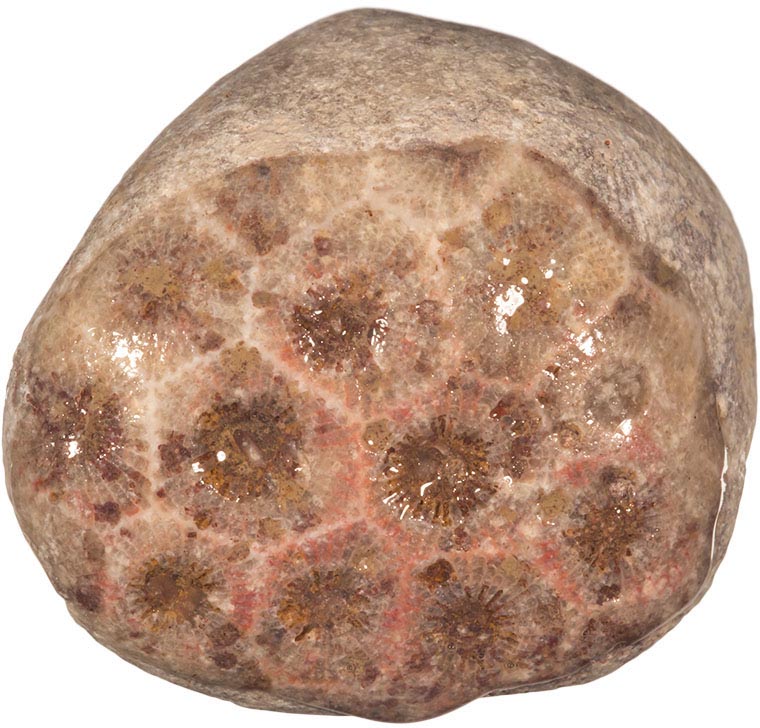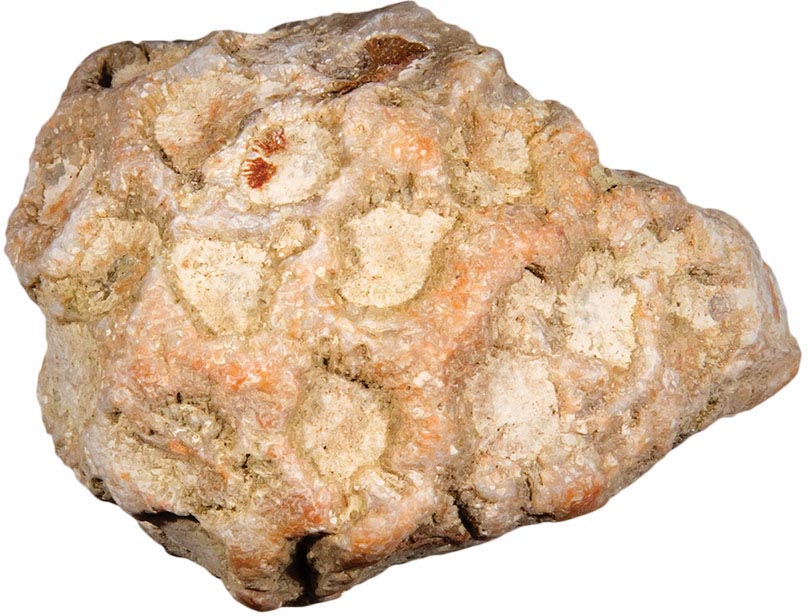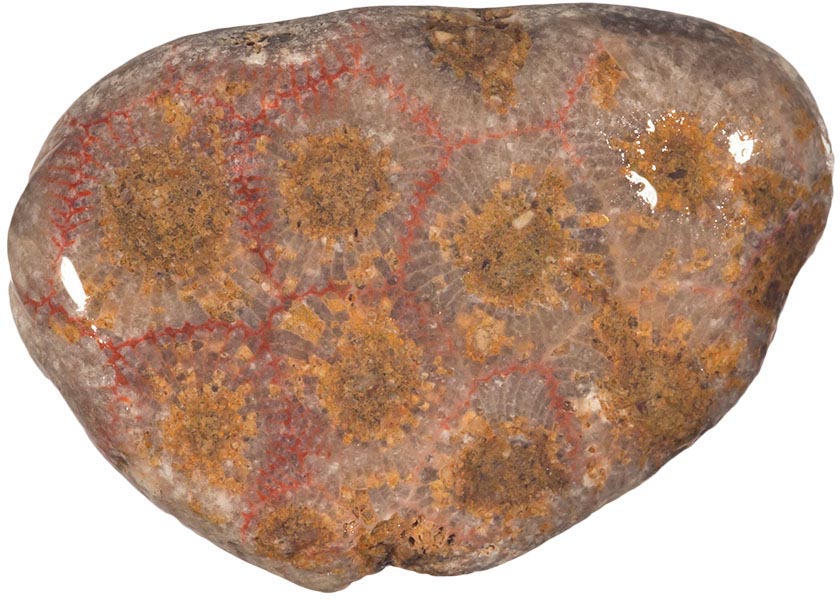
Virtually every specimen of Petoskey stone you’ll find will be some shade of gray, brown, yellow, or tan, but some rarer hues do exist. Some exhibit reds or pinks, thought to be caused by iron impurities, and these are rare and highly sought-after by collectors. Some of these rarities contain “ribbons” of reddish color that follow the boundaries of the corallite walls, while others may have a pale pink coloration throughout the entire specimen. Particularly vivid specimens can be quite valuable among certain hobbyists.
Sometimes a Petoskey stone may appear to be green or greenish-yellow—this is almost invariably the result of recent algae or other plant growth. Since limestone is very porous, microorganisms can easily use its surface to anchor and grow. Most of the time, this coloration will fade after drying out, and it can usually be removed completely by washing.

A Petoskey stone with hints of pink-red coloration, shown wet
Specimen courtesy of Bob Wright

This rough specimen shows an orange-pink coloration that is slightly more common than the deep pinks or reds.
Specimen courtesy of Bob Wright

A rare Petoskey stone with red “ribbons” that follow the corallite walls, shown dry (above) and wet (below)